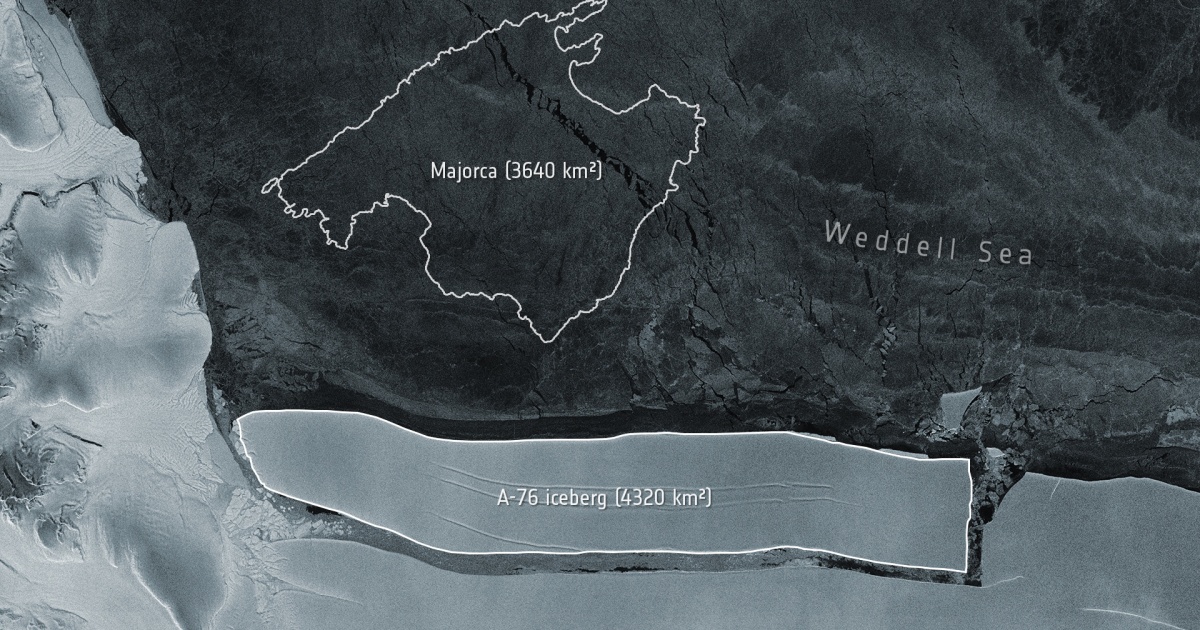
An enormous chunk of ice bigger than the state of Rhode Island has broken off an Antarctic ice shelf, according to the European Space Agency. The floating mass covers more than 1,600 square miles, making it the largest iceberg in the world, agency officials said.
The iceberg, dubbed A-76, calved off the Ronne Ice Shelf into the Weddell Sea. The European Space Agency’s twin Copernicus Sentinel-1 satellites spotted the giant slab of ice breaking away on May 13.
The U.S. National Ice Center — which is operated by the National Oceanic and Atmospheric Administration, the Navy and the Coast Guard — confirmed the calving event the following day and recorded the position of A-76 in the Weddell Sea.
“Iceberg A-76 calves from the western side of the Ronne Ice Shelf in the Weddell Sea and is currently the largest iceberg in the world,” the organization tweeted Friday.
The finger-shaped iceberg is roughly 105 miles long and 15 miles wide, according to the European Space Agency. Its total area is more than 70 times that of Manhattan, New York.
It’s not uncommon for an ice shelf to shed, and calving events occur naturally as these sprawling frozen platforms advance and contract. In recent decades, however, scientists have said climate change is causing worrisome changes across the Antarctic region. Global warming can, for instance, accelerate an ice shelf’s retreat and cause it to collapse, according to the National Snow and Ice Data Center.
The European Space Agency said the largest iceberg title was previously held by a chunk of ice known as A-23A. That iceberg, which covers an area just under 1,500 square miles, is also currently afloat in the Weddell Sea.
While A-76 is huge, it’s still nearly three times smaller than the biggest iceberg in recorded history. That designation belongs to an iceberg named B-15 that calved off of Antarctica’s Ross Ice Shelf 21 years ago. The B-15 iceberg covered more than 4,200 square miles when it broke away, according to NASA’s Earth Observatory.
Icebergs get their names based on where and when they were first observed. Antarctica is divided into quadrants, with the letters A, B, C and D used to denote the different regions. A sequential number is then assigned to each newly identified iceberg. As such, A-76 was spotted in the Bellingshausen/Weddell Sea quadrant and was the 76th iceberg tracked by the U.S. National Ice Center.
An iceberg that forms from another already-named iceberg is then given a sequential letter at the end of its name.
Source: | This article originally belongs to Nbcnews.com










